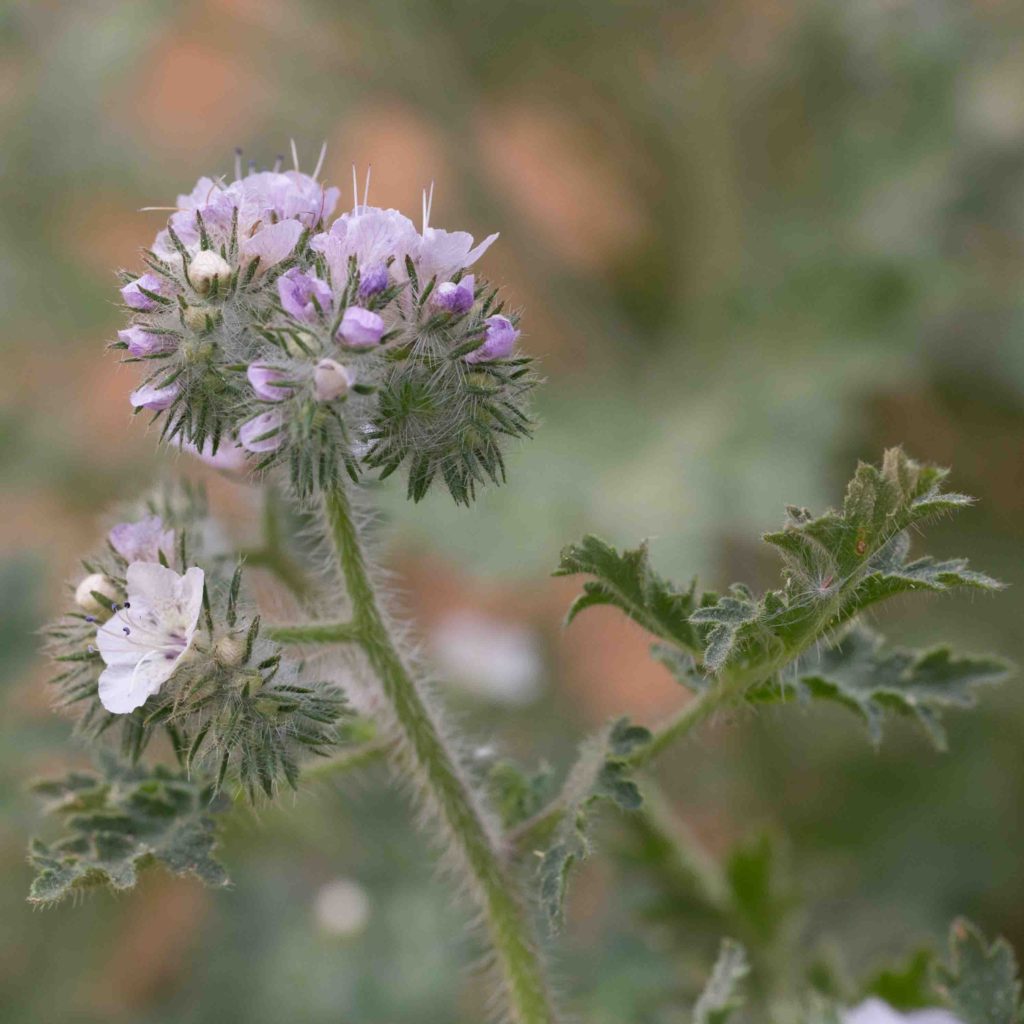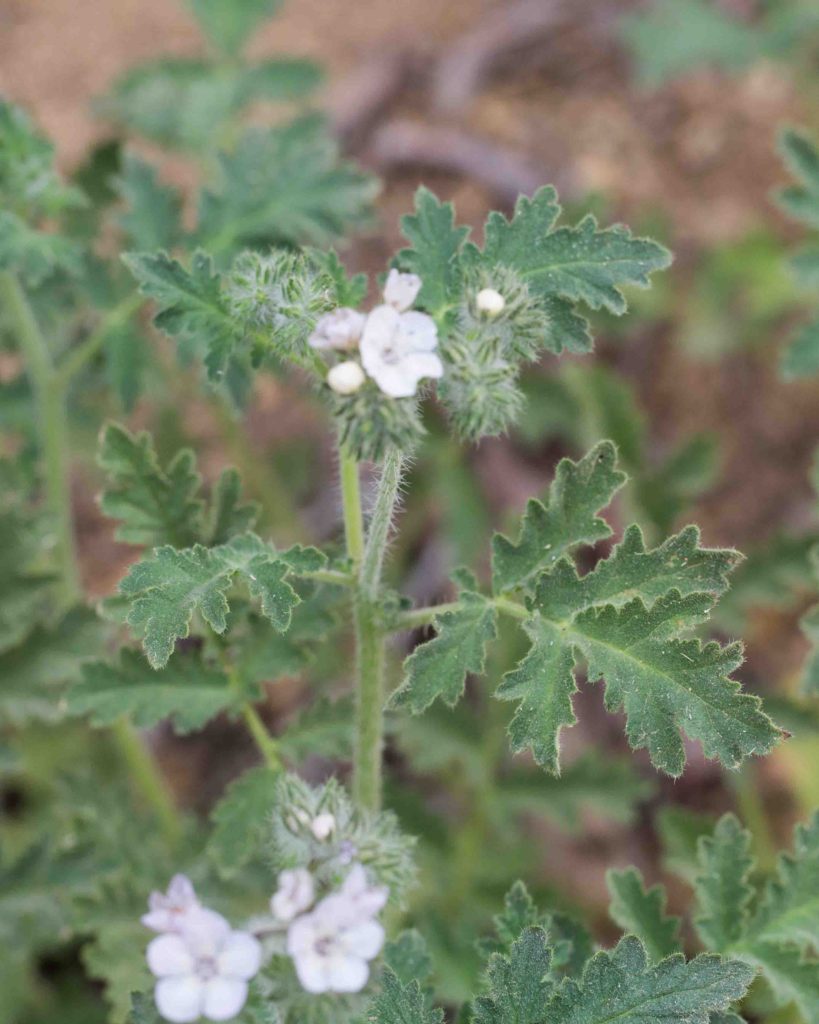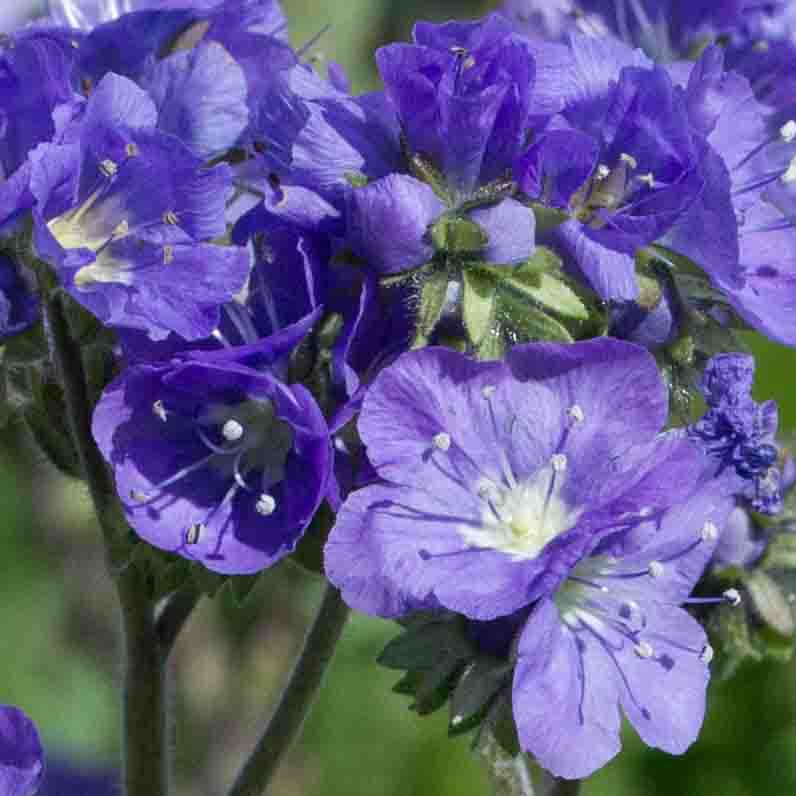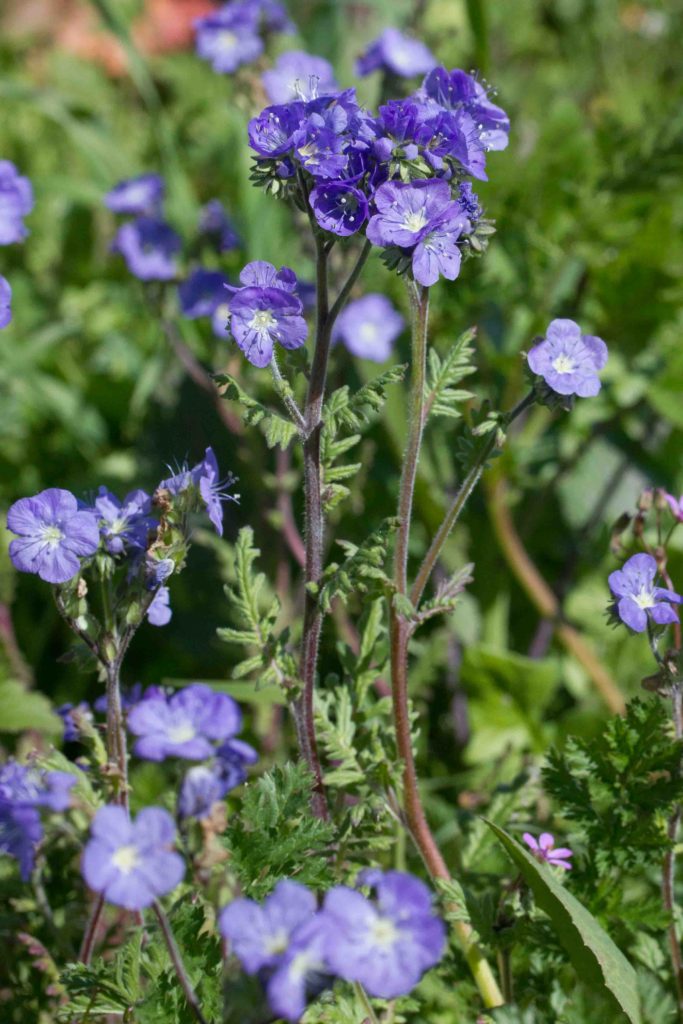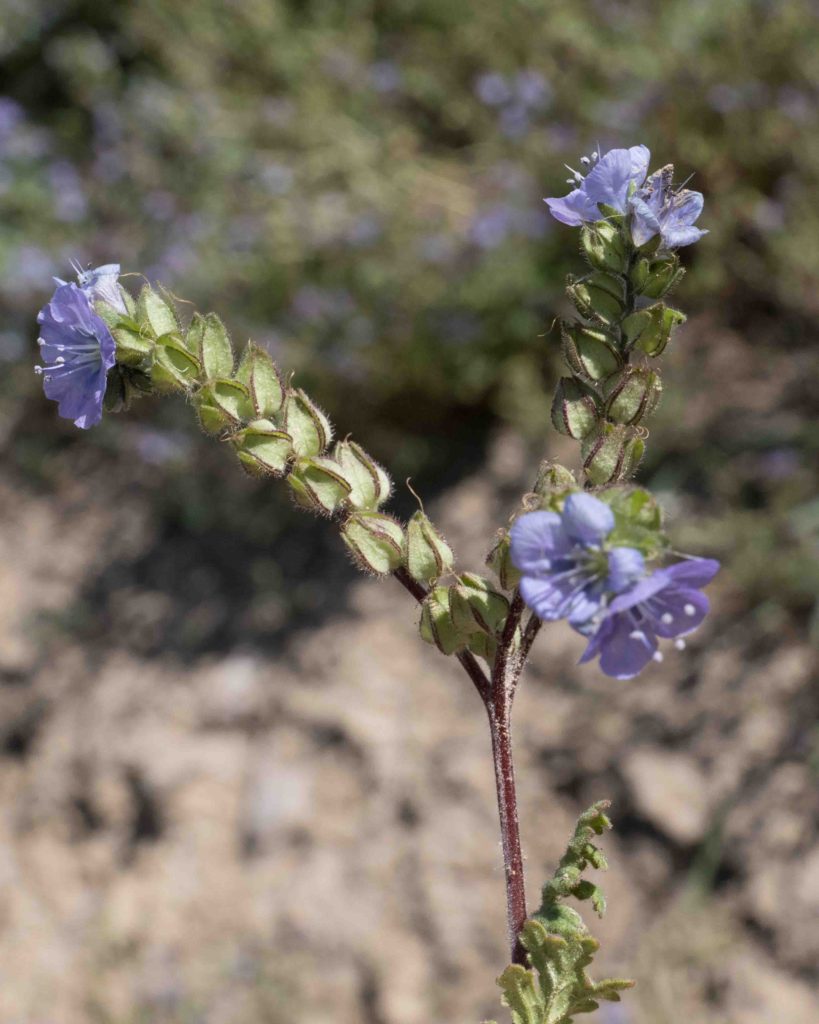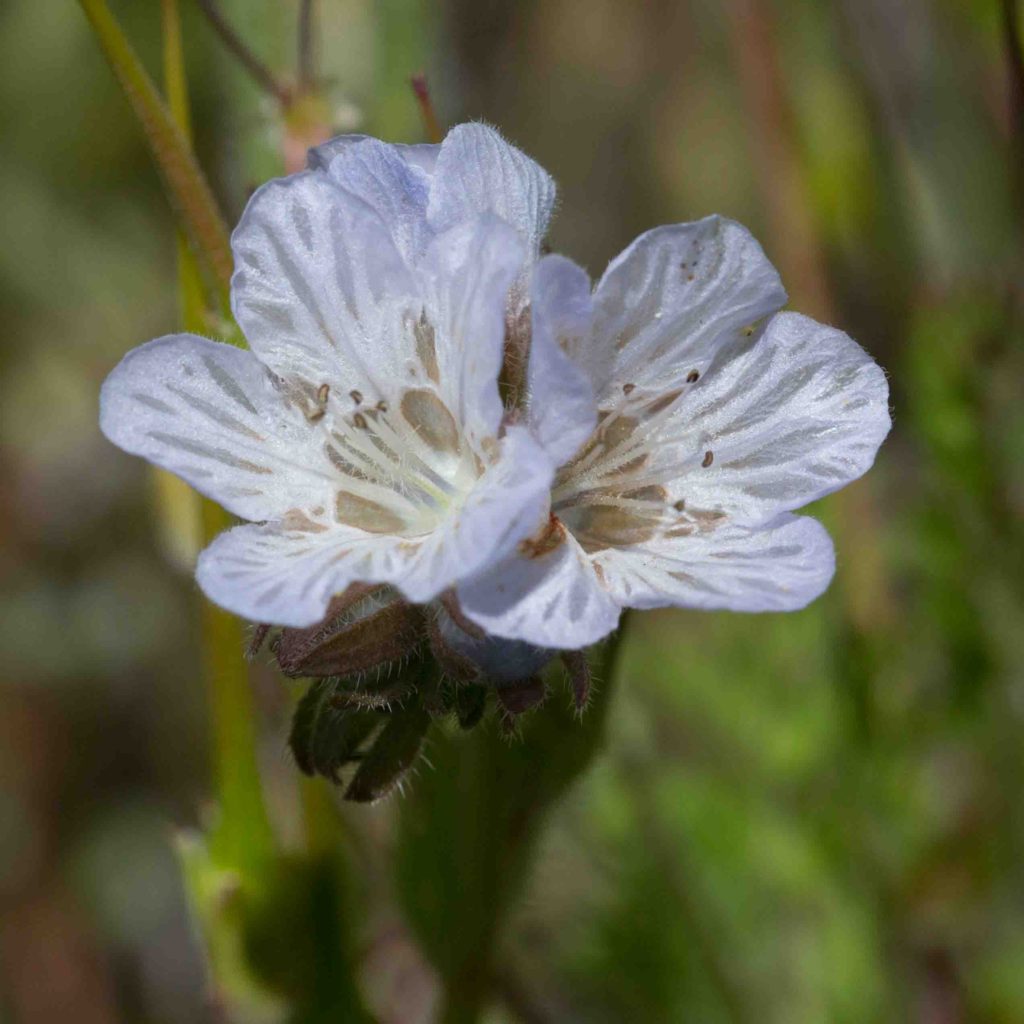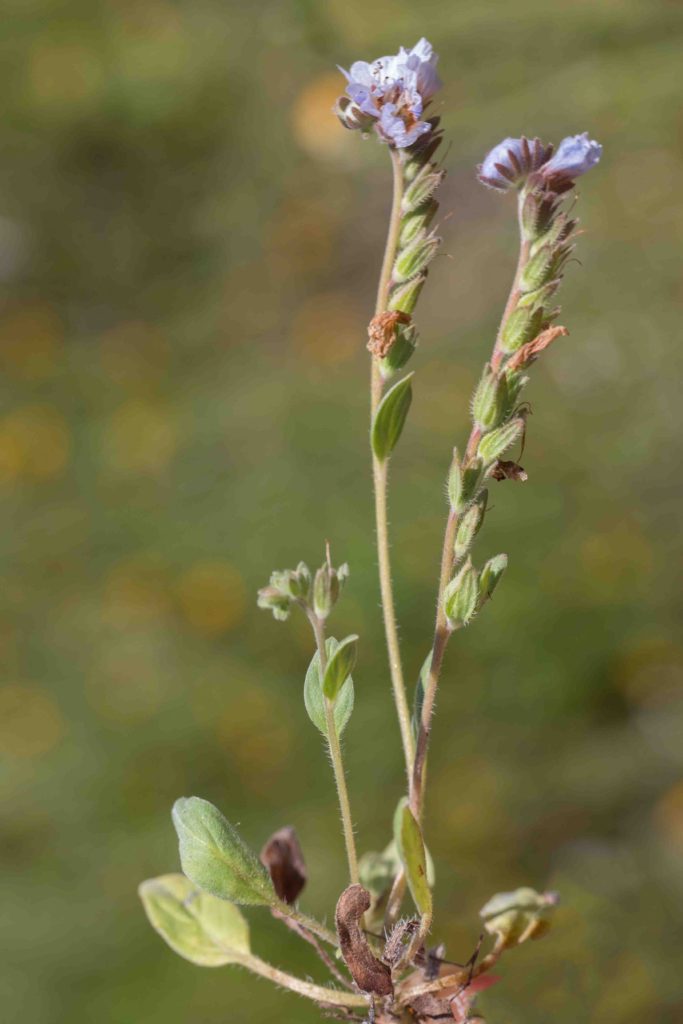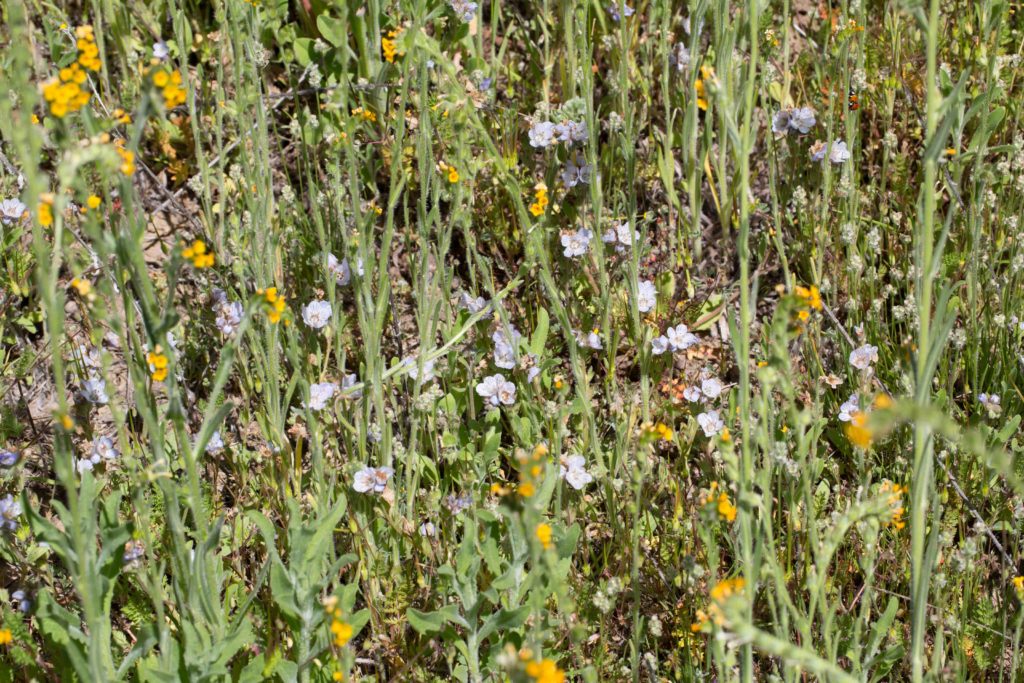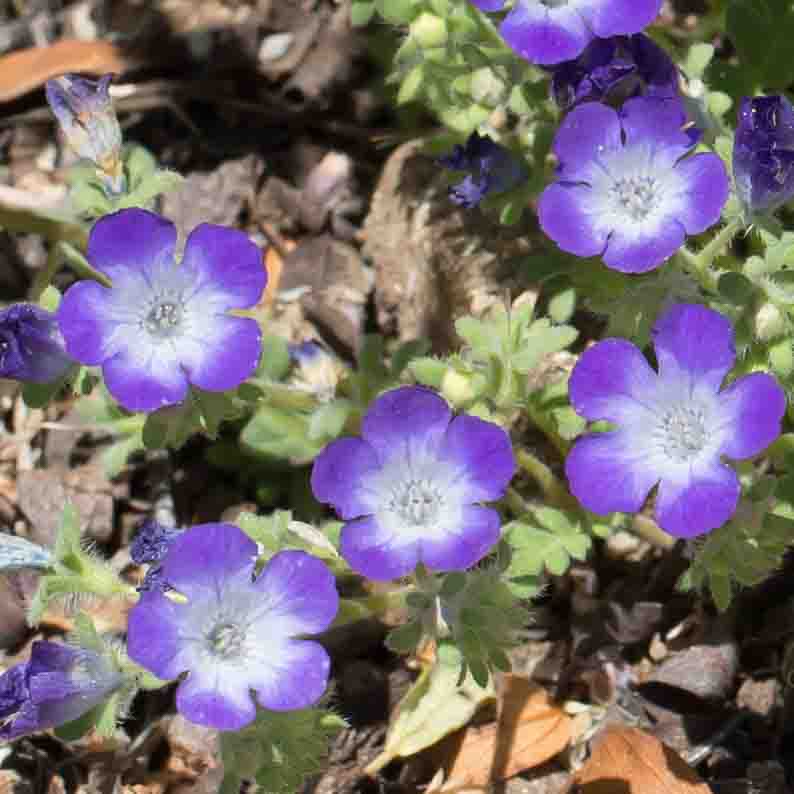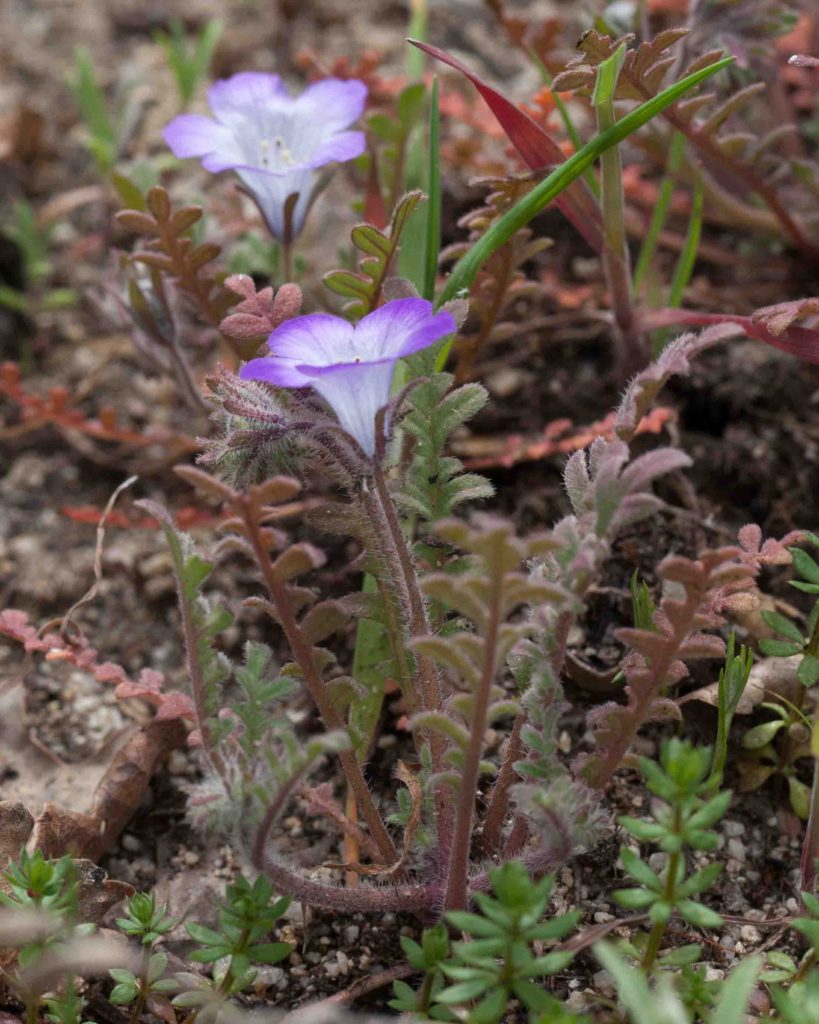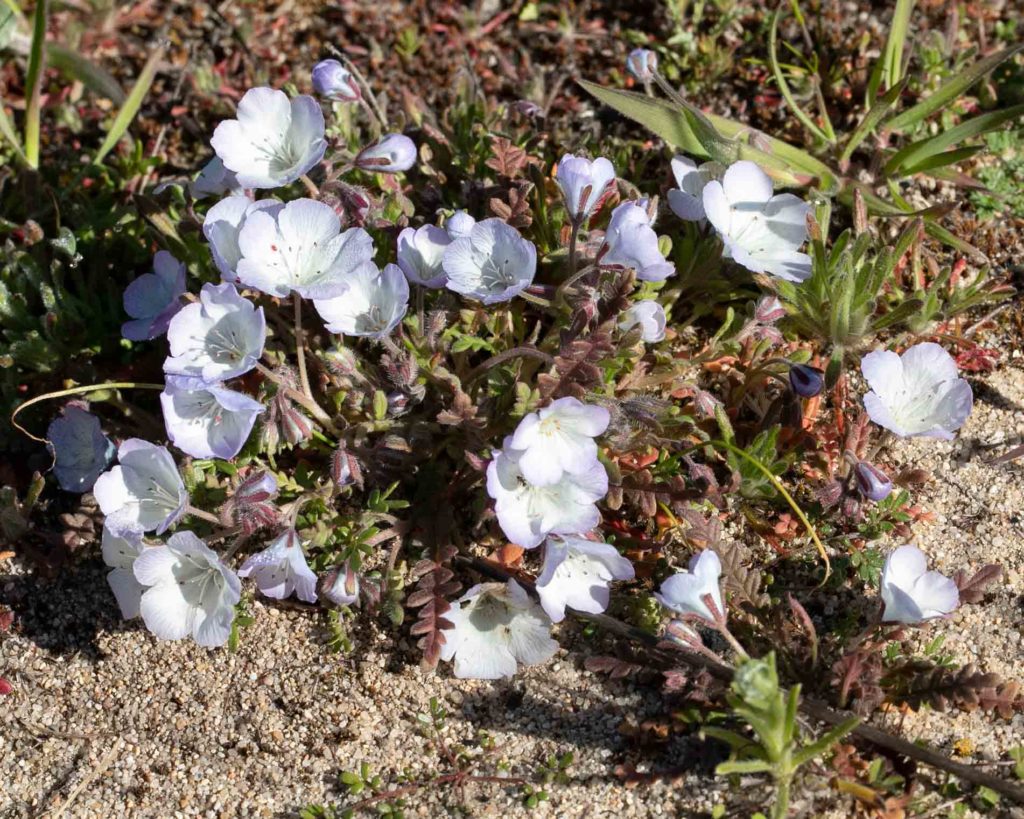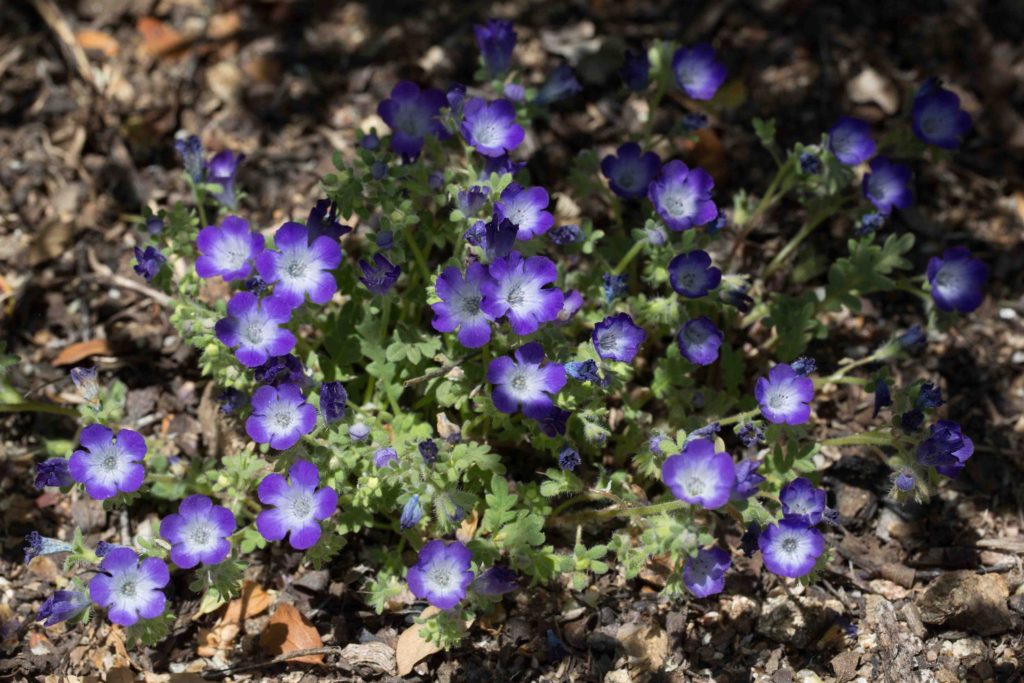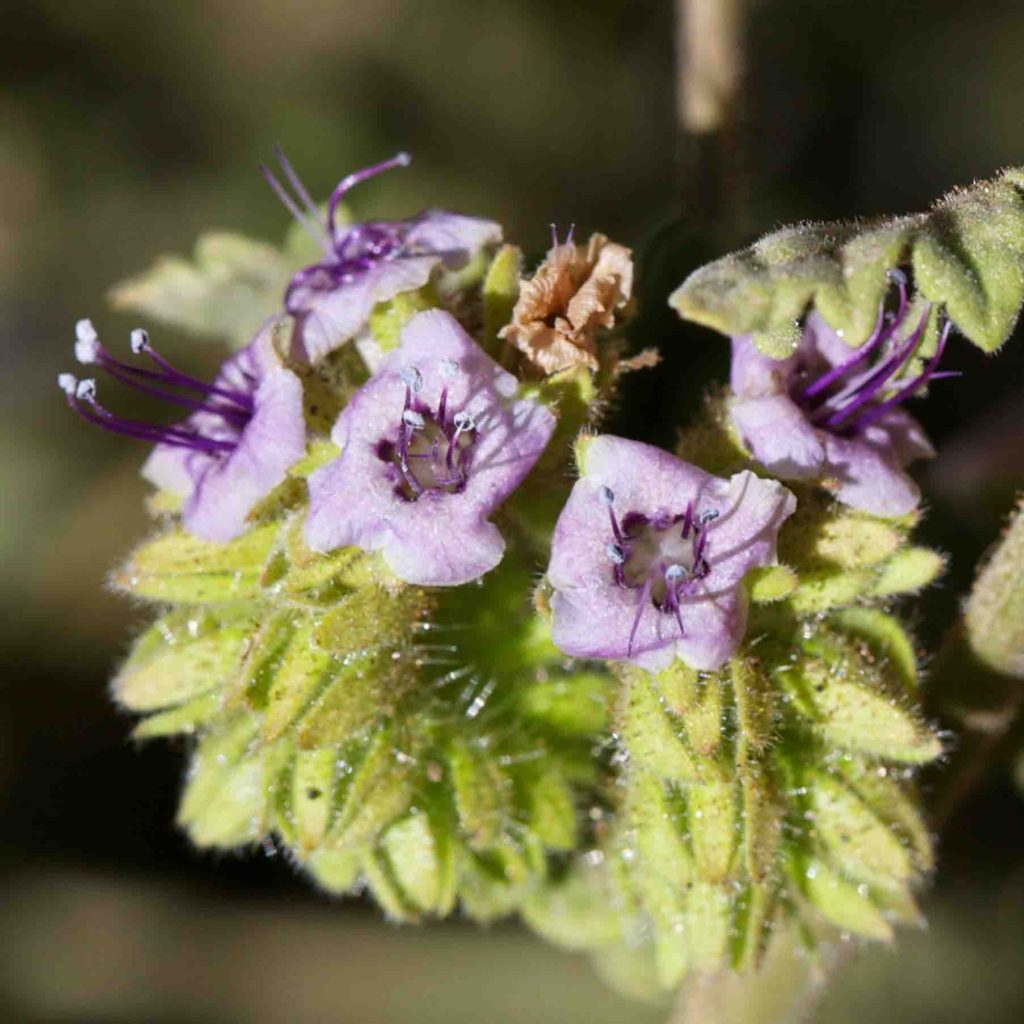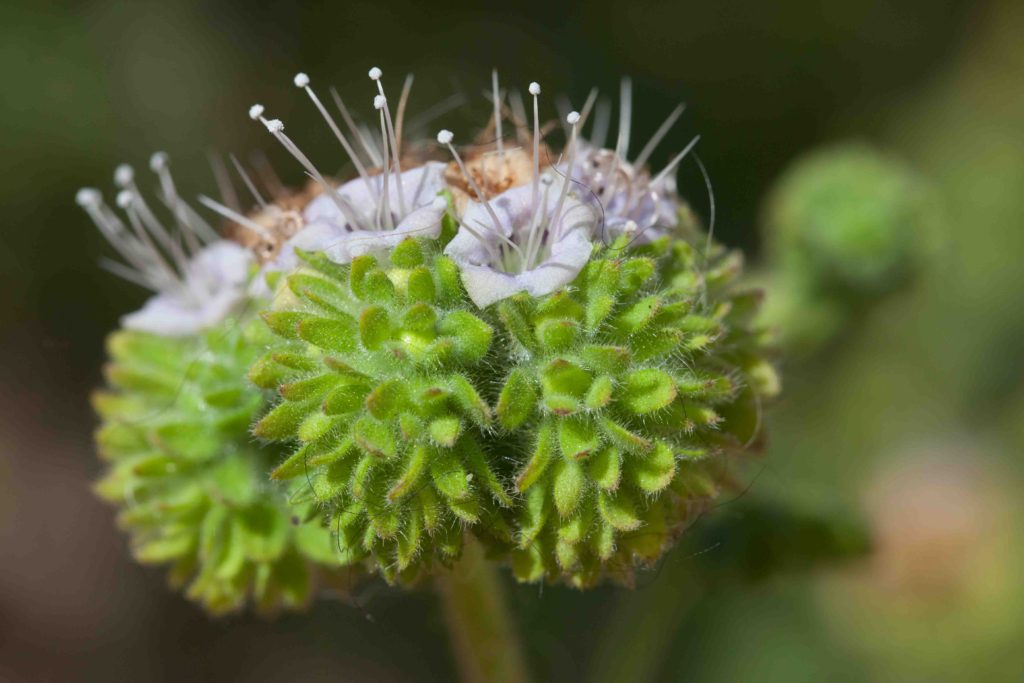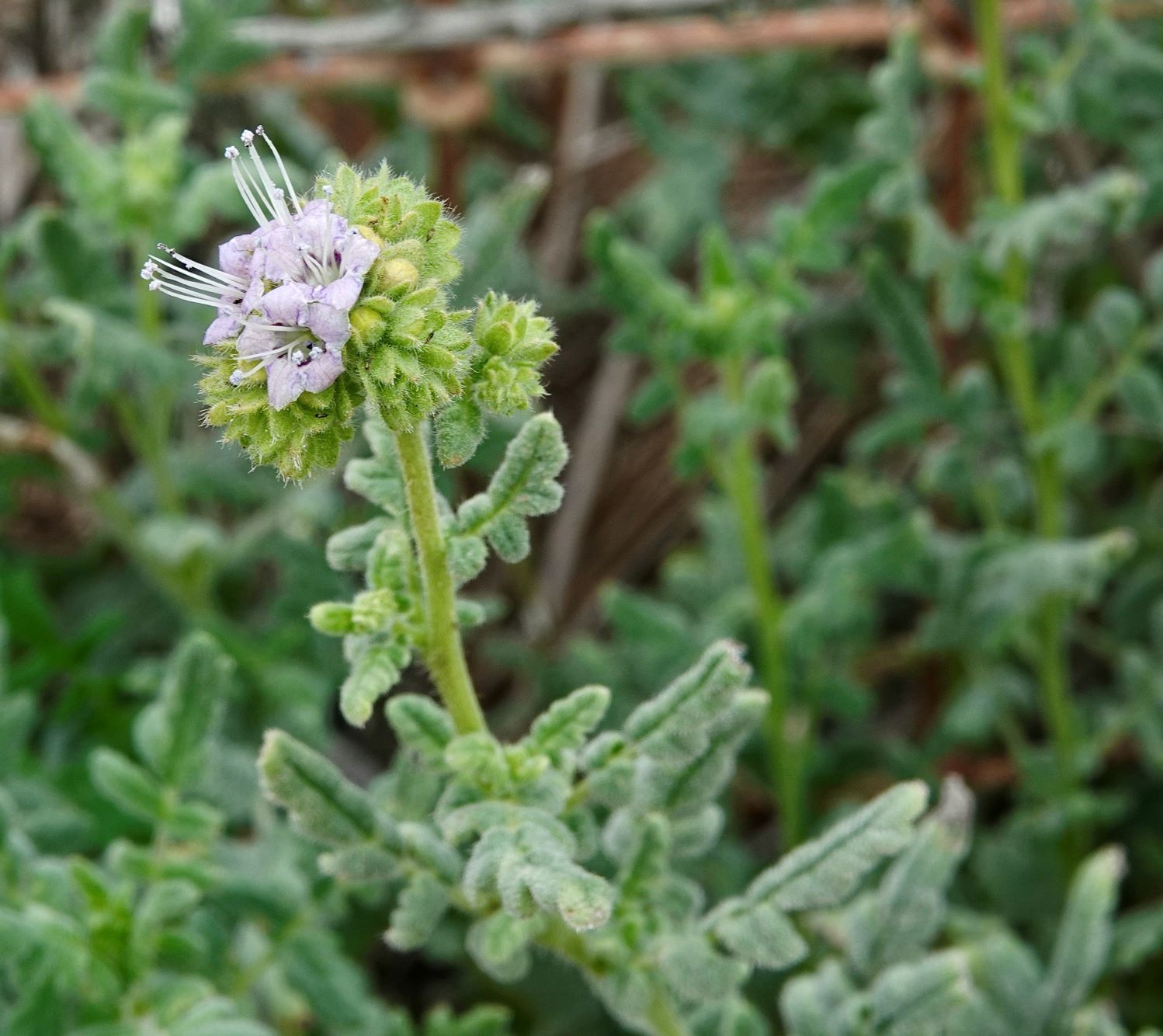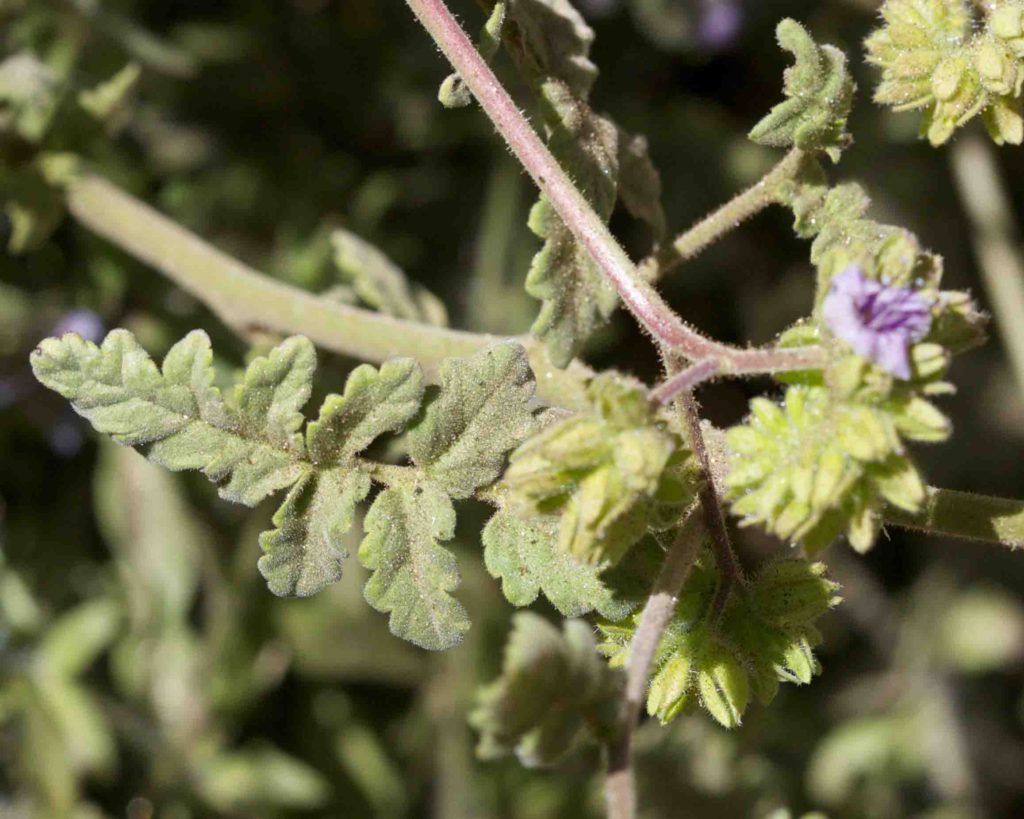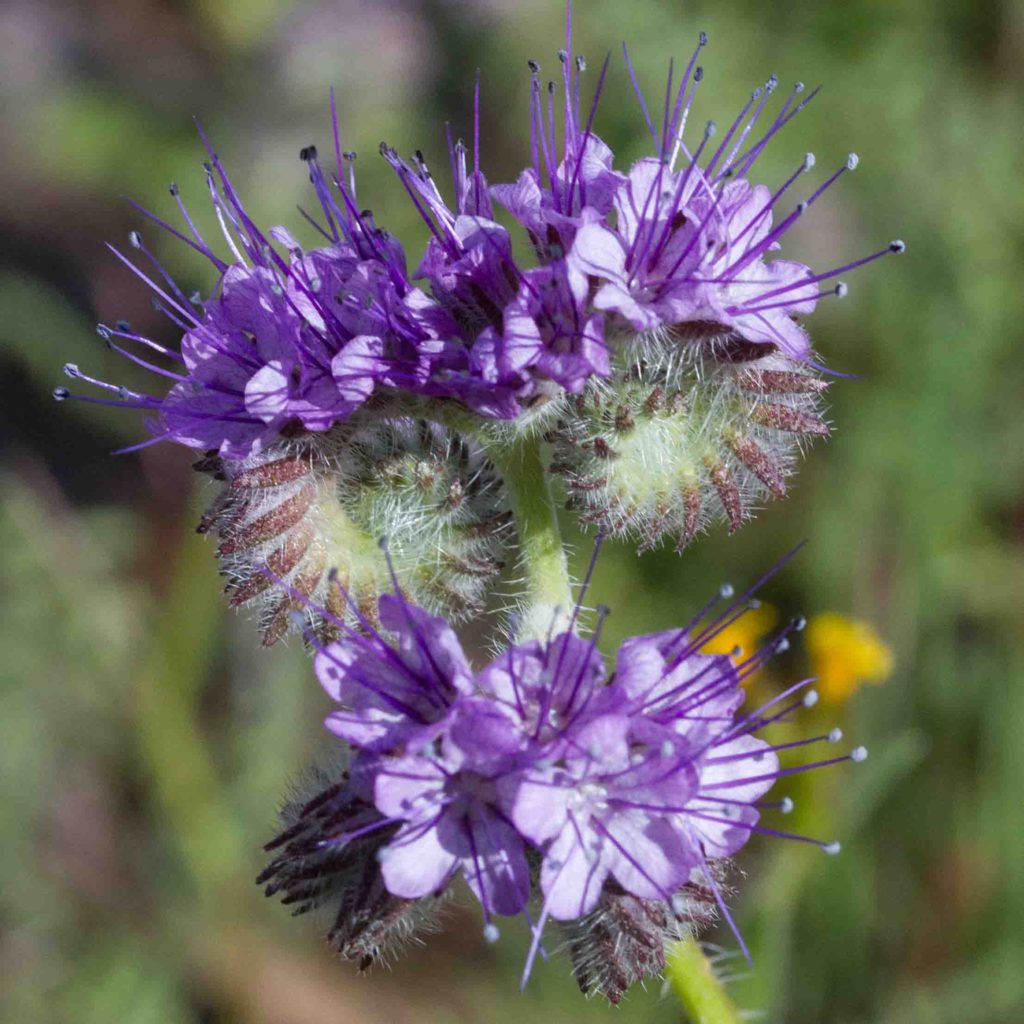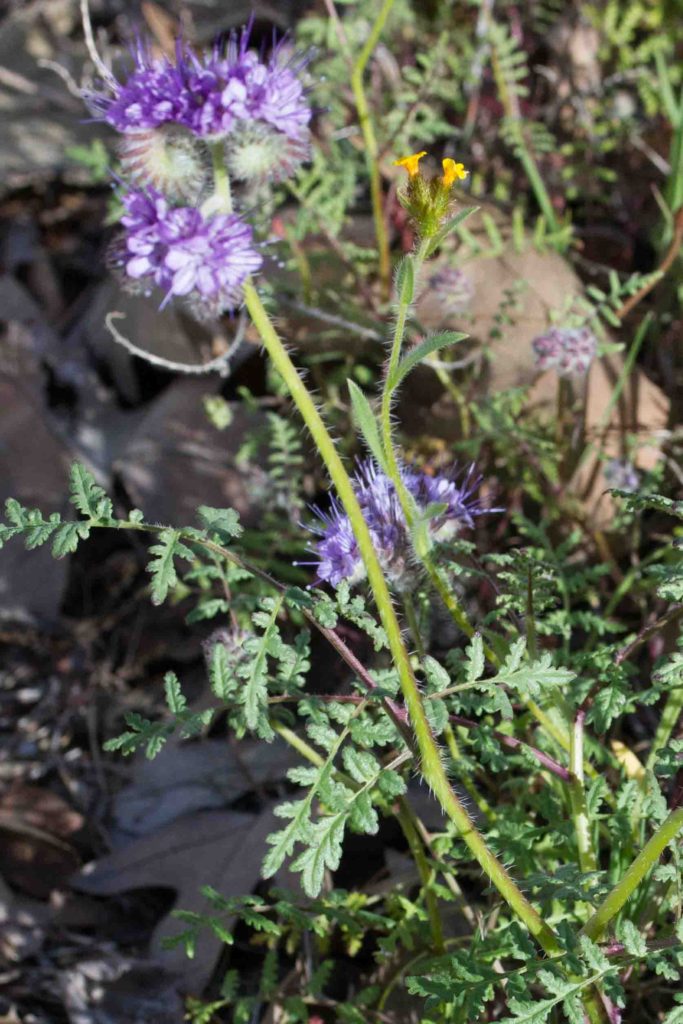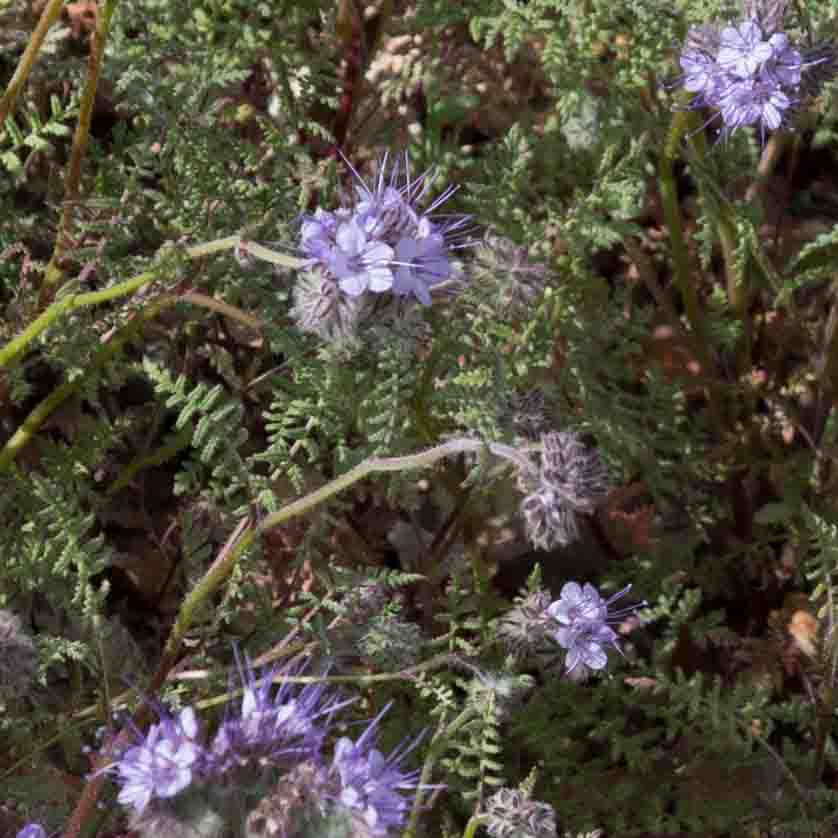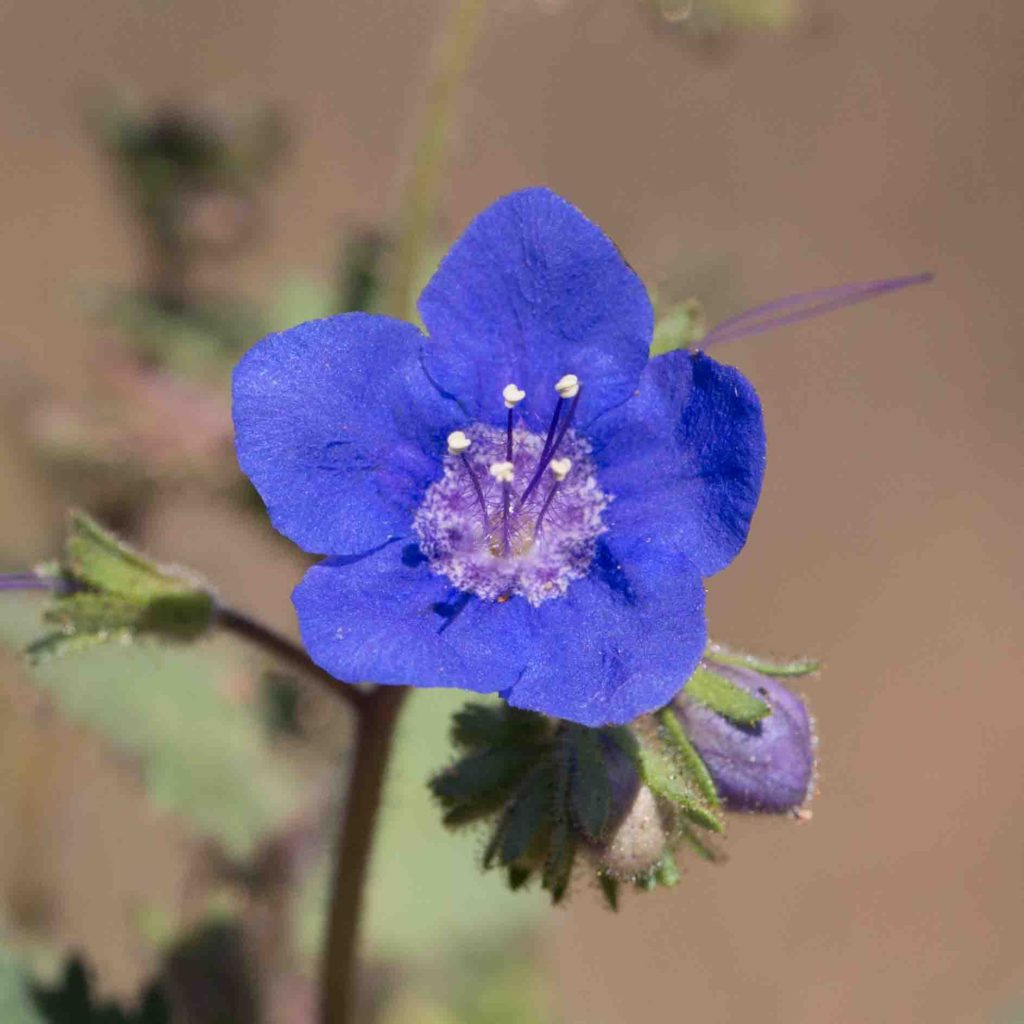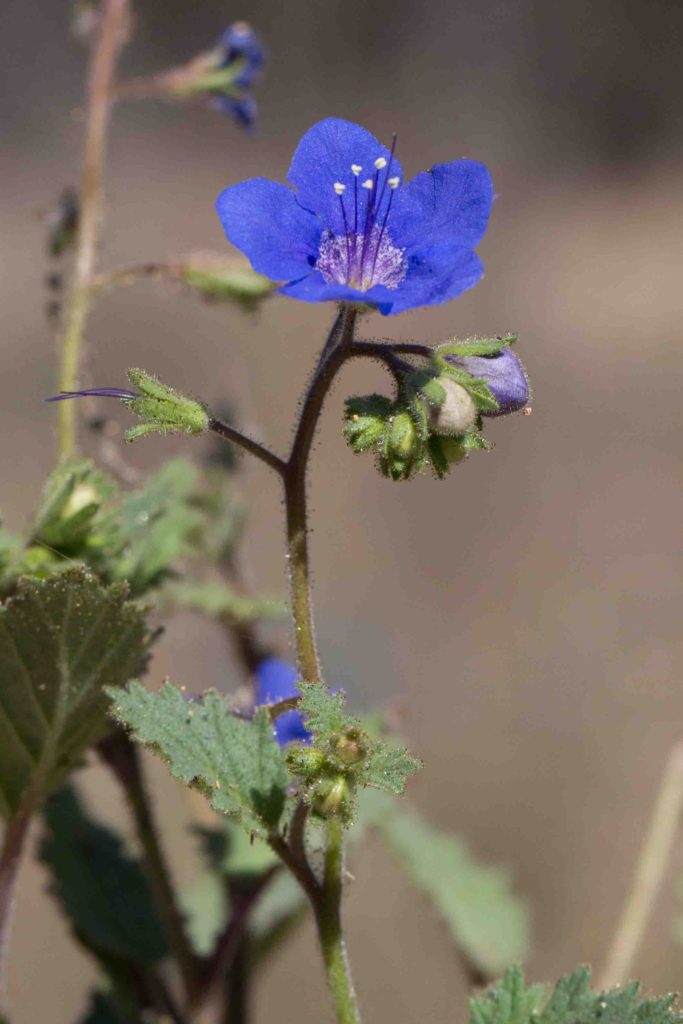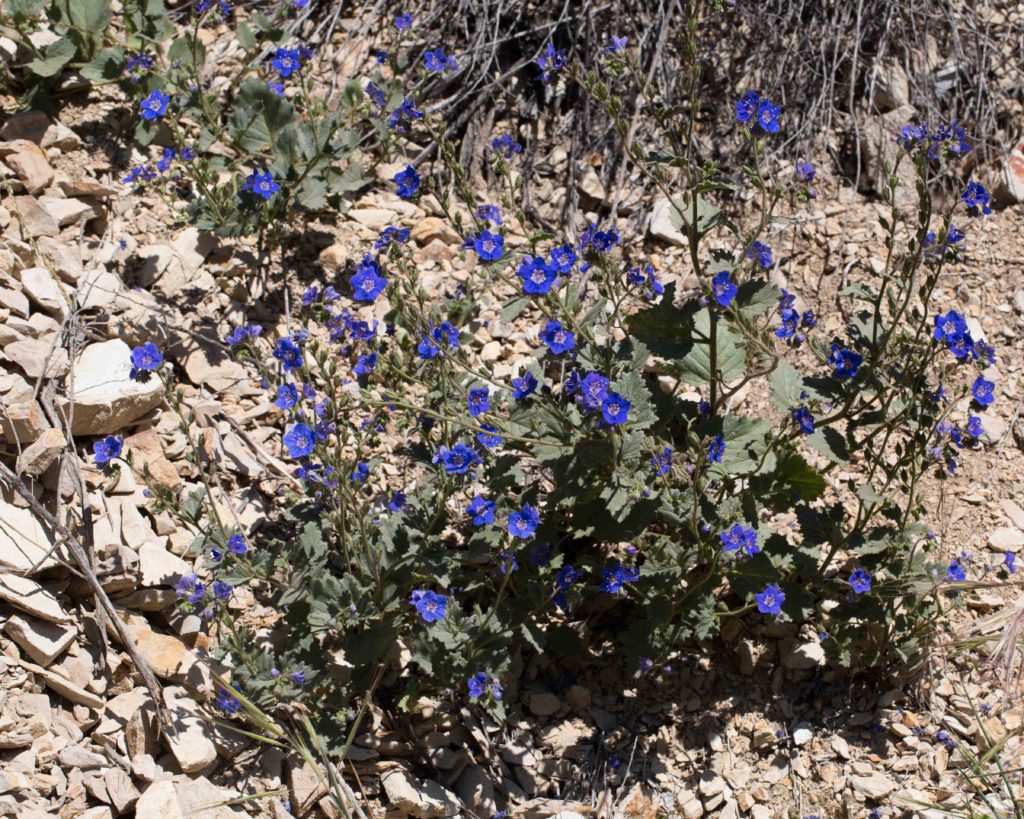Hydrophyllaceae: Waterleaf Family — Phacelia (Blue-purple flowers)
Most members of the Waterleaf family have their flowers arranged in coiled (scorpioid) cymes. The 5 petals are partly united, to form a bell or funnel shape. The 5 stamens are often longer than the petals, with a 2-lobed stigma. Closely related to the Borage family.
Caterpillar Phacelia – Phacelia cicutaria var. hispida
Blooms:
Feb–June
Plant Height:
18–60 cm
Flower Size:
Small
Origin:
Native
Habitat:
Rocky slopes or grassland
Notes:
This uncommon plant has pale lavender, bell-shaped flowers, the lower more widely separated than the upper. It is is ascending to erect. Leaves are deeply lobed to compound, 2–15 cm long, with toothed segments. The calyx lobes are all alike and linear, with stiff hairs and a grayish appearance. Uncommon.
Great Valley Phacelia – Phacelia ciliata
Blooms:
Feb–June
Plant Height:
10–55 cm
Flower Size:
Small
Origin:
Native
Habitat:
Open grassland, clay or gravelly slopes
Notes:
This has dense clusters of bluish-purple to pale blue flowers, with long exserted stamens. The midrib and veins in the calyx are usually raised. The plant is erect, simple, or branched near the base. Leaves are pinnately lobed. It is uncommon, but may be found in great quantities in the southeastern part of the county (for example, along Hwy 25 north of Hwy 198), turning whole fields blue. It could be mistaken for the blue-purple form of Common Phacelia (Phacelia distans). However, the throat of this flower has no lavender spots.
Divaricate Phacelia – Phacelia divaricata
Blooms:
Apr–June
Plant Height:
9–40 cm
Flower Size:
Small
Origin:
Native
Habitat:
Open areas, grassland, woodland
Notes:
The cauline leaves of this annual phacelia are mostly entire, rather than compound or deeply lobed. Leaves are longer than wide, elliptic to narrowly ovate and clearly petioled. Flowers are pale lavender to violet. Stems are decumbent to erect. Uncommon in Monterey, apparently confined to the Diablo Range.
Douglas’ Phacelia – Phacelia douglasii
Blooms:
Mar–May
Plant Height:
6–40 cm
Flower Size:
Small
Origin:
Native
Habitat:
Sandy areas, occasionally conifer woodland
Notes:
This is a low-growing, short-hairy plant with bell-shaped flowers ranging from pale blue to deep bluish-purple. On Fort Ord, they are pale colored; those at higher elevations in the Santa Lucia Mountains are darker. Leaves are mostly basal, and pinnately parted. Darker colored petals are usually paler towards the base. Larger plants are exceptionally striking.
Branching Phacelia – Phacelia ramosissima
Blooms:
Apr–Oct
Plant Height:
30–150 cm
Flower Size:
Small
Origin:
Native
Habitat:
Many, both coastal and inland
Notes:
One of the few perennial and woody phacelias, much-branched as its common name suggests. Its flowers can be either whitish or lavender, often with backwards-folding petals. Leaves are compound with coarsely toothed or lobed leaflets, often but not always hairy. Photo #3 by CJH.
Tansy-leaved Phacelia – Phacelia tanacetifolia
Blooms:
Mar–May
Plant Height:
15–100 cm
Flower Size:
Small
Origin:
Native
Habitat:
Open flats and slopes
Notes:
The bluish-purple, bell-shaped flowers might be mistaken for those of Great Valley Phacelia (Phacelia ciliata, see above). However, the stamens and style are more prominently exserted, 9–15 mm long (compared to 8–12 mm for Great Valley Phacelia). Also, some of the flowers are persistent (remaining on the inflorescence), even after withering. Leaves are generally compound, oblong to ovate with clearly separated, toothed or lobed leaflets.
Sticky Phacelia – Phacelia viscida var. viscida
Blooms:
Mar–June
Plant Height:
20–100 cm
Flower Size:
Medium
Origin:
Native
Habitat:
Open sandy and disturbed places
Notes:
Immediately recognizable by its intense royal-blue flowers. The plant is erect, sometimes many-branched, with leaves that are elliptic to broadly ovate and irregularly toothed. Most commonly seen in the Arroyo Seco area.

